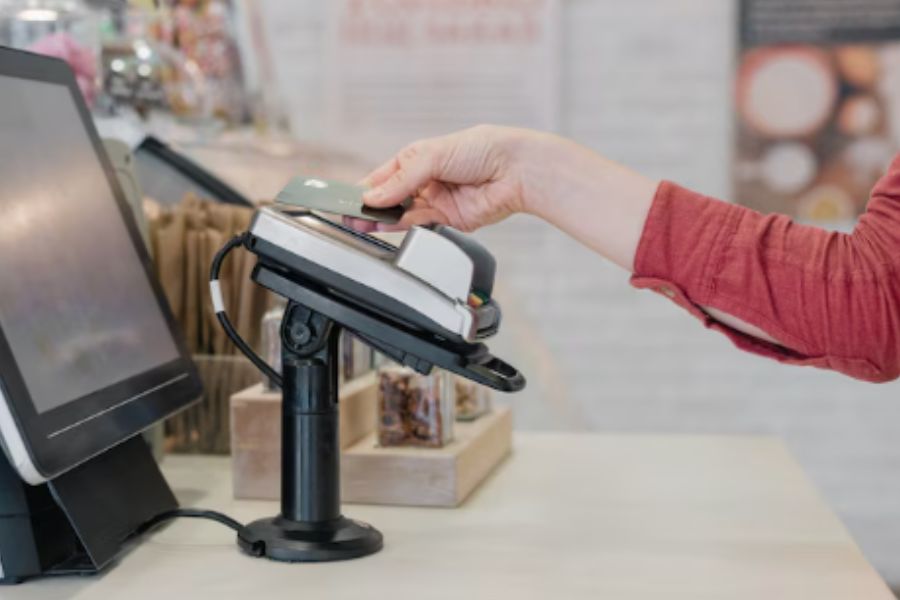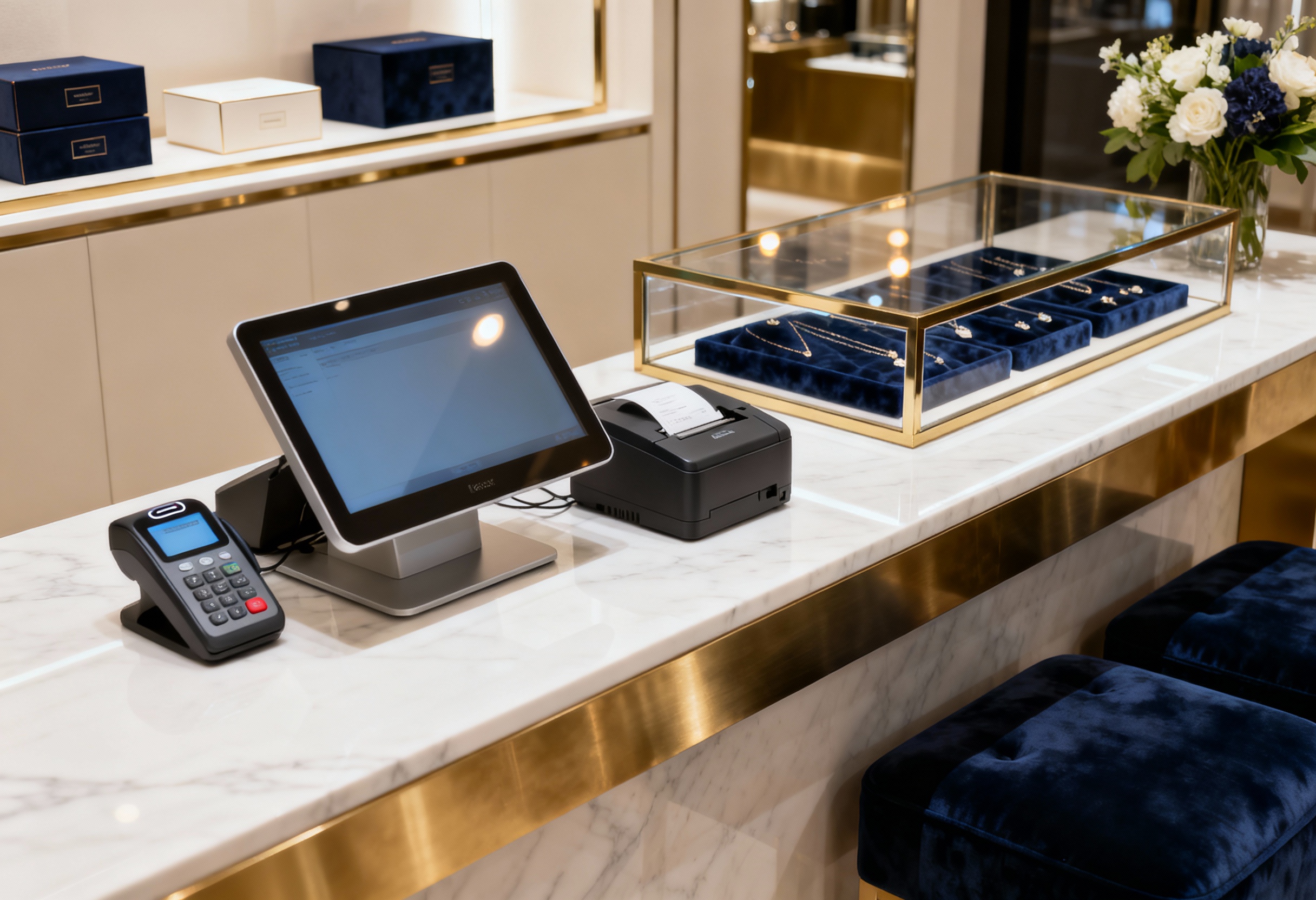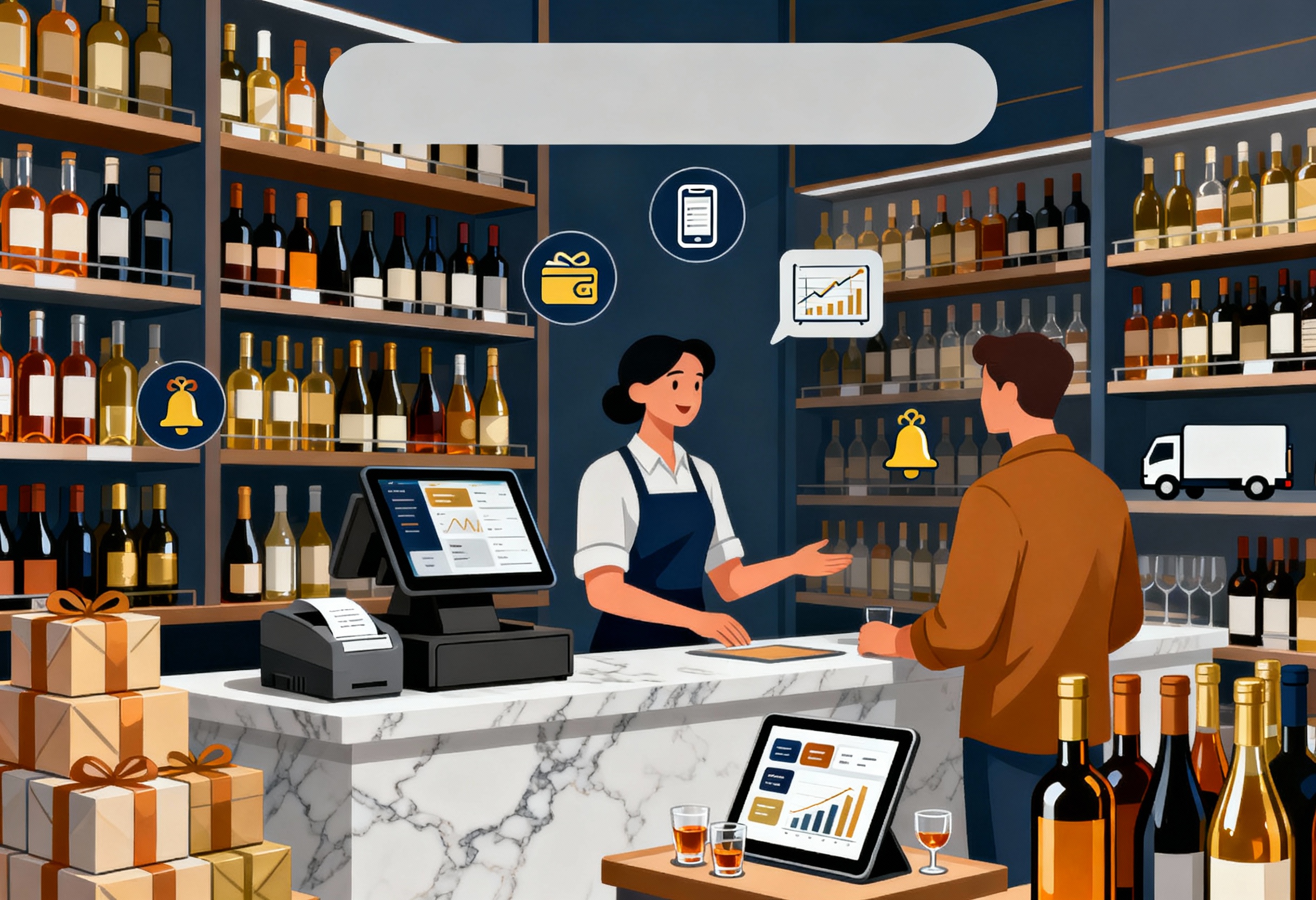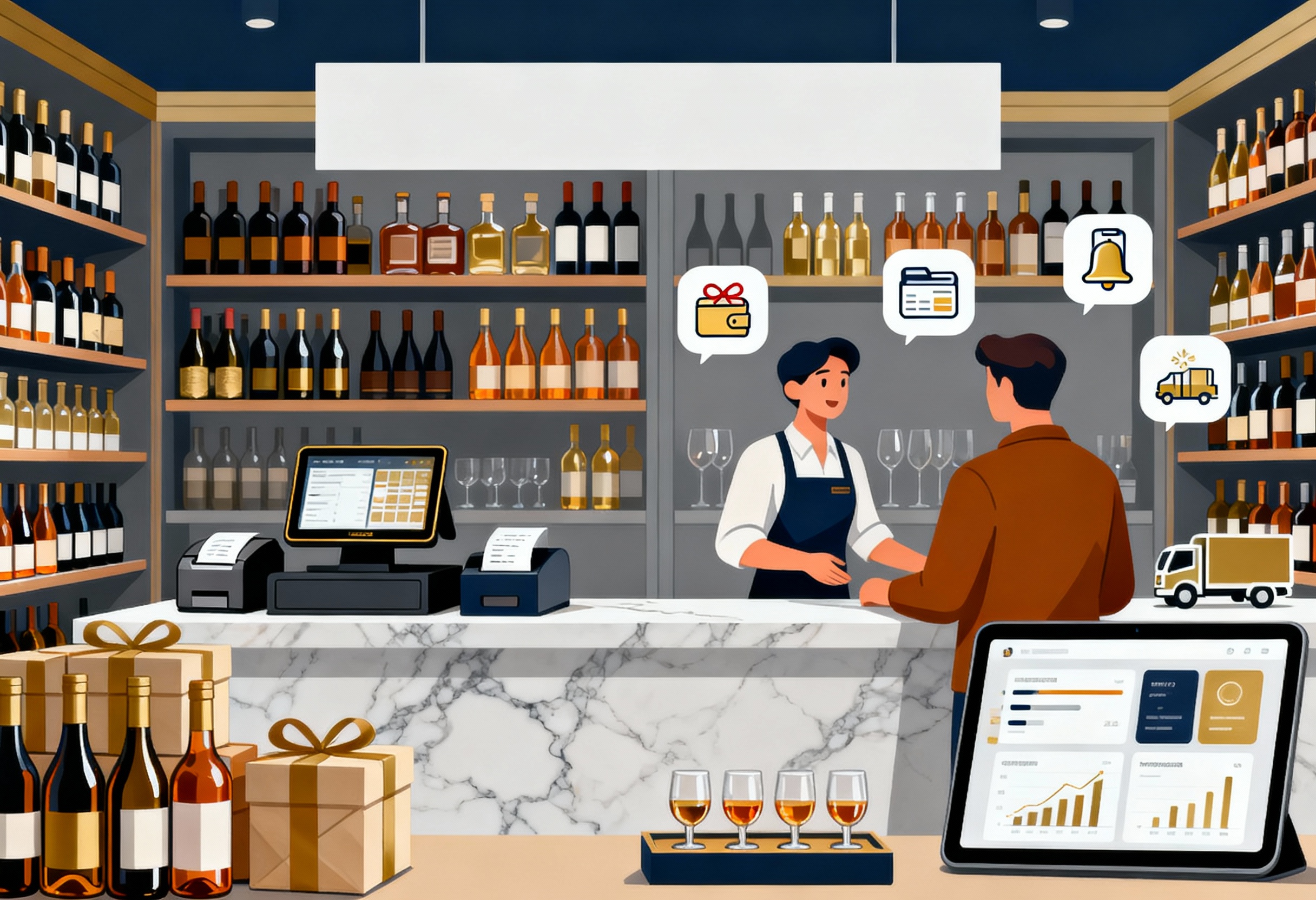Managing a shared vendor space without an effective system is like herding cats. Everyone’s got their own setup, their own rules, and their own way of tagging merchandise. The result? Chaos at checkout, missing rent payments, and zero clarity on what actually sold. Before things fall apart, let’s take a closer look at why a purpose-built antique mall POS is the system every shared vendor space truly needs.
Highlights:
- Shared vendor spaces often struggle with too many sellers using disconnected systems, manual rent tracking, and scattered inventory, which creates daily friction for both staff and vendors.
- A purpose-built antique mall POS simplifies everything – from centralized checkout and vendor sales tracking to automated commissions, remote item entry, and easy label printing at home.
The Unique Mess of Managing Shared Vendor Spaces
Let’s start where the pain is loudest: managing day-to-day operations without the right tools. The cracks show up fast when everything is patched together. According to Forbes, retailers lose an estimated US$46.8 billion each year to inventory shrink caused by manual miscounts, theft and misplacement alone.
Too many vendors, not enough systems
One space, dozens-sometimes hundreds of vendors. Each with their own styles, pricing, and stock lists. When everyone’s using sticky notes, text messages, or emailed spreadsheets to track sales, the mess adds up fast.
One customer buys from five different booths. Now what? Manually calculating payouts? Printing separate receipts? That’s a full-time job no one wants.
Inventory chaos when everything’s one-of-a-kind
In a traditional store, ten red mugs have one SKU. At an antique mall, every single mug might be different. No barcode. No standard price. One’s chipped, one’s vintage, one’s handmade.
If the POS can’t handle custom SKUs or item-level descriptions, staff are stuck guessing at the register. Or worse, they might sell something that was already sold. It’s a headache that only gets worse as booths fill up, especially when global online sales in the art & antiques market topped US$10 billion in 2024. This shows the booming demand vendors need to capture in real time.
Manual rent tracking
It’s wild how many shared spaces still track booth rent and commissions on paper. Excel sheets get messy. Checks get lost. Splits get miscalculated. Vendors start asking, “Where’s my payout?” You’re suddenly deep in receipts, trying to explain why their rent was double last month. A proper antique mall POS handles that math in seconds. No spreadsheets. No stress.
Ready for fewer mistakes and more trust across vendors? Then it’s time to trade guesswork for clarity.
What a Purpose-Built Antique Mall POS Actually Solves
So what happens when you stop patching things up and start using a custom POS built for your setup? A lot of problems just disappear.
Centralized checkout without confusion
Shared spaces only feel organized when the checkout is clean.
►►► Optimal solution set for businesses: Multi store POS, Next-gen POS, Inventory Management Software (MSI), Self Service, Automation, Backorders
An antique mall POS software rings up items from different vendors in one smooth transaction. No switching systems. No splitting receipts by hand. The system knows which vendor owns what, so the shopper gets one bill, and each vendor gets their cut, automatically.
Vendor accounts with sales tracking and remote item entry
Forget chasing down tags or scribbled notes. Each vendor gets their own login, where they can add inventory, check their sales, and print tags. They can log in at midnight, upload three vintage lamps, and see them scanned by noon the next day. A next-gen POS handles it all behind the scenes. There’s no need to call the front desk or send text updates.
Meanwhile, mobile payments at the point of sale have climbed to 23 percent adoption in U.S. stores as of Q2 2024. Only a POS built for flexibility can meet that customer expectation.
Commission splits, rental fees, and payouts on autopilot
This is where the math finally makes sense. Once a sale goes through, the system calculates what’s owed to each vendor based on preset rules.
Flat fee, percentage, custom deal. It’s all baked in. Monthly rent? Auto-deducted. Card fees? Split and reported. Come payday, vendors get clean statements and prompt payments. No more guesswork, no more “you missed a decimal.”
Easy label printing, even from home
Running back and forth just to print tags is a waste of time. With the right POS, vendors can create and print barcode labels wherever they are: home, booth, or even their car if they’ve got Wi-Fi. They scan clean at checkout, show item descriptions, and speed things up on busy weekends.
Bonus: no more chicken-scratch handwriting on masking tape.
Why Generic Retail POS Won’t Cut It Here
Not all POS systems are built for the quirks of antique retail. What works for a big box store just doesn’t cut it in a shared space.
Lack of SKU flexibility kills antique sales
Generic systems expect uniformity: ten of the same plate, barcoded and boxed. But in antique malls, no two items are alike. A teacup from the 1800s won’t share a SKU with a mid-century lamp.
Without a POS that can handle one-off entries, staff either skip tracking altogether or waste time forcing square pegs into round holes. Worse, errors pile up fast. The wrong tag, and that $400 mirror walks out for $40.
Most systems aren’t built for ‘booth-style’ retail
Shared vendor spaces aren’t chain stores. Each booth has its own pricing, its own sales, and often its own tax arrangements. Try telling a basic POS to apply 60/40 commissions, split card fees, deduct rent, and credit each vendor accurately. Most can’t.
And when that system can’t separate sales by booth, owners end up back in spreadsheets trying to make sense of the mess.
Real-time vendor access changes the game
The right antique mall POS software doesn’t just manage inventory. It keeps vendors in the loop. They can log in anytime, track sales by item, and plan what to restock. If a mirror sold at 2 PM, the vendor sees it at 2:01. That visibility builds trust. It also means fewer calls to the front desk, fewer payout disputes, and faster booth turnover. Everyone wins.
Everything mentioned above is just the beginning. Let’s look at a system that actually delivers it all.
ConnectPOS: Built for Antique Malls and Shared Vendor Businesses
ConnectPOS was made for the kind of retail that doesn’t fit in a box. Antique malls, flea markets, vendor collectives. It handles them all without breaking a sweat. It’s designed for complexity, not cookie-cutter retail. Whether vendors are selling fine china or refurbished farm tools, ConnectPOS keeps operations clean, sales accurate, and vendors in control. It doesn’t just support variety. It thrives in it.
- Multi-vendor support: Every sale links back to the right booth, vendor, or item. No confusion. No crossed wires. Each vendor sees exactly what belongs to them, right down to the last dime.
- SKU generator: One-off items with no barcode aren’t a problem. Just click, create, and go. No guessing, no repeats, and no need to rely on sticky notes ever again.
- Vendor portal: Vendors don’t need to show up to stay in sync. They can upload inventory, print labels, and track sales from home. Whether they’re in the booth or at the beach, they’re still in control.
- Automated commission splits, rent, and payouts: No calculators, no spreadsheets. Whether it’s fixed rent, percentage splits, or card processing fees, ConnectPOS tracks and settles it all.
- Real-time sync: Sales, stock, and vendor earnings update the moment something happens. No lag. No double entries.
- Flexible hardware compatibility: ConnectPOS runs on tablets, desktops, scanners, or printers you already use. Need receipt printers? Use what works for your space.
- Custom receipt notes: Add item-level descriptions, which is ideal when that Victorian mirror needs a little backstory.
- Offline mode: Even if the Wi-Fi cuts out, sales continue without disruption.
- Mobile POS and self-checkout: Let staff assist customers anywhere, or speed things up on weekends with self-service kiosks.
- Multiple payment methods: Accept cash, cards, contactless, or even split payments without blinking.
- Loyalty programs: Built-in tools reward regulars or allow vendor-specific deals.
- Omnichannel ready: Syncs in-store and online sales, stock, and customer info across channels.
- Inventory images: Staff can verify unique items at checkout by photo, cutting confusion.
- Smart reports: Filter by booth, vendor, category, or date to get the exact data you need with reports & analytics.
- Quick restock and multi-store support: Get alerts for low stock and manage several locations from one place.
Whether you’re running 5 booths or 500, ConnectPOS keeps your antique mall running like it should: simple, synced, and stress-free.
FAQs
1. Do I need a separate POS for each vendor in an antique mall?
Not at all. A solid antique mall POS keeps everything under one roof. You get one system to manage all vendors, each with their own sales reports, payouts, and inventory tracking. Clean, simple, and built to scale.
2. Can vendors upload and manage their own items?
Yes, they can. And honestly, they should. The best systems give vendors their own login so they can add inventory, set prices, and print tags from anywhere. No more waiting around for staff to handle it.
3. What if some items don’t have barcodes?
That’s where SKU flexibility comes in. A good POS lets you create unique SKUs or ring up items manually without wrecking the workflow. Perfect for vintage finds that never came with a tag.
Final Thoughts
Running an antique mall isn’t just retail. It’s coordination. Dozens of vendors, thousands of unique items, and a checkout process that has to make sense for everyone. That’s why a purpose-built antique mall POS isn’t optional. It’s the only way to run a shared space without drowning in manual work.
The right POS tracks sales, automates payouts, and updates in real time without errors or confusion. ConnectPOS brings all that to the table and more. It gives you the tools to keep things running smooth, fast, and fair. It’s not just about selling antiques. It’s about keeping vendors happy, staff stress-free, and customers coming back.
Want to see it in action? Get in touch today to find out how ConnectPOS can work for your antique mall.
►►► Optimal solution set for businesses: Shopify POS, Magento POS, BigCommerce POS, WooCommerce POS, NetSuite POS, E-Commerce POS



